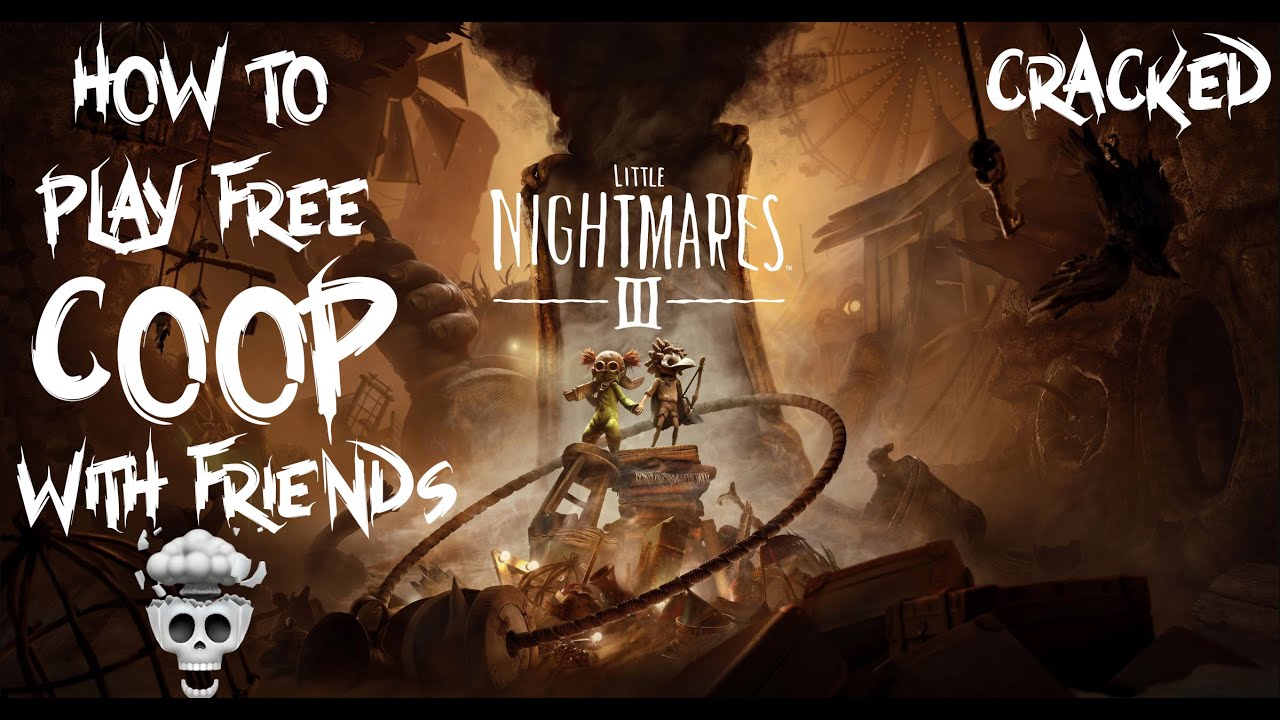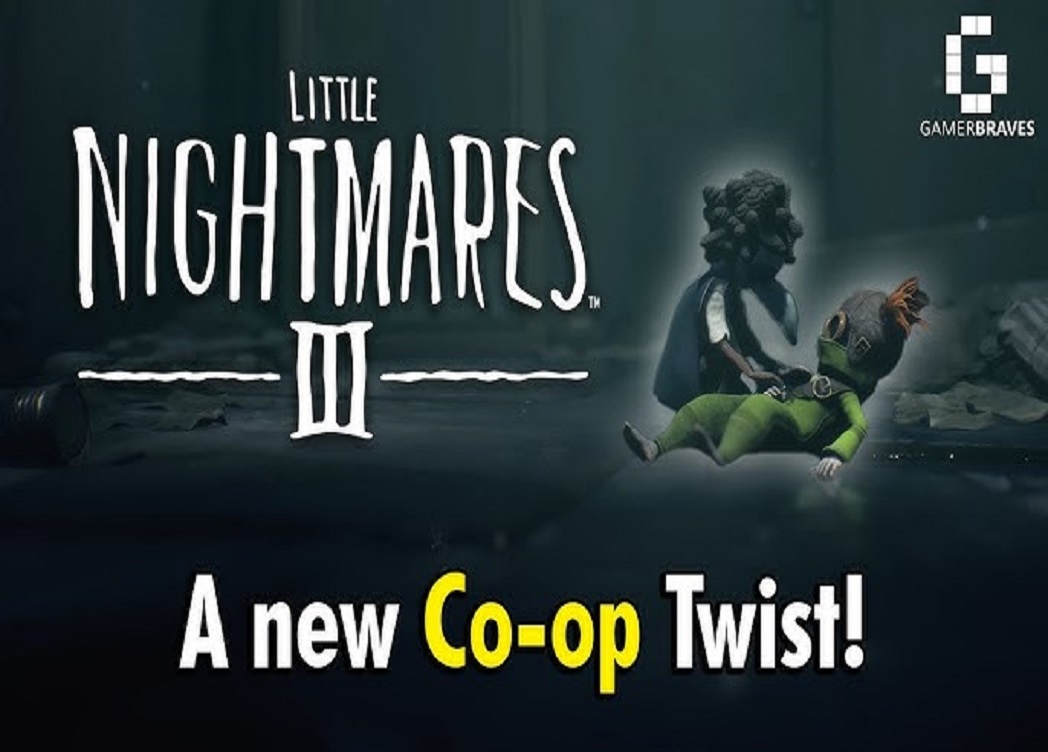Introduction
Little Nightmares III marks a turning point for the series, with the first full online co-op experience. This eerie sequel allows two players to explore the haunted world of The Spiral together. Players take control of Low and Alone, each with unique abilities, and must work together to overcome puzzles, monsters, and the unsettling world around them. This guide explains how co-op works, how to use the Friend Pass feature, character abilities, team-up strategies, and the best ways to overcome challenges when playing with friends.

How Co-op Works in Little Nightmares III
Online Play Only
Little Nightmares III features online-only co-op. There’s no split-screen or local multiplayer. The design choice preserves the tension and visual atmosphere that define the series. To play together, both players must connect online through the same platform.
Friend Pass Feature
The Friend Pass system allows one player who owns the game to invite another player to join their session without requiring both to buy the game. This makes it easier for friends to experience the full story together. However, both must play on the same platform for this to work.
Solo Mode with AI
If you prefer to play alone, Little Nightmares III offers a solo mode where the second character is controlled by AI. The AI companion mimics cooperative actions and helps you solve puzzles that require two participants. You cannot switch between co-op and solo once you begin a campaign, so decide which mode you want before starting.
Save Files and Mode Restrictions
Each playthrough is tied to a single mode. You cannot swap partners mid-game or invite new players into an existing co-op save. Multiple save slots are available, allowing you to keep both solo and co-op progress separately.
Crossplay Limitation
At launch, there is no crossplay support. Players must be on the same platform to use the co-op mode and Friend Pass system.
Character Roles and Abilities
Understanding how the two main characters work is the key to a smooth co-op experience.
-
Low carries a bow and arrow, useful for hitting distant switches, cutting ropes, or distracting enemies.
-
Alone wields a wrench, which can break barriers, open pathways, and interact with mechanical devices.
Each level is designed to use these abilities in creative ways, requiring coordination. One player may need to trigger a switch while the other performs a timed action elsewhere. In combat, one character may need to stun enemies while the other finishes them off.
Cooperative Puzzle and Enemy Tactics
Communicating Effectively
There’s no built-in voice chat, but the game includes a signal mechanic that allows players to call or gesture to each other. Simple cues help coordinate movements and actions. External voice chat tools can also improve coordination.
Splitting Tasks
Many puzzles require two players to perform actions at the same time. Communication is crucial:
-
Decide who will perform each task before starting.
-
Wait for clear signals before activating switches.
-
Don’t rush ahead or block the other player’s movement.
Facing Enemies Together
In combat or stealth segments, teamwork is vital. One player may draw enemy attention while the other sneaks past. When attacking, coordinate weapon use and positioning to avoid getting trapped. Both players need to stay aware of their surroundings and each other’s timing.
Using Knowledge from the Demo
Players who tried the early demo, especially in the Necropolis area, will have a better idea of puzzle structures and enemy behavior. Knowing these layouts helps teams anticipate traps and hazards during full playthroughs.
Tips and Strategies for Successful Co-op
-
Plan roles early: Decide who plays Low and who plays Alone before starting.
-
Use call signals wisely: Use gestures to indicate readiness or direction.
-
Communicate constantly: Use external chat for precision if needed.
-
Stay patient: Allow your partner time to explore or catch up.
-
Avoid blocking each other: Keep some distance in narrow areas.
-
Support each other: If one player gets stuck, observe and offer solutions.
-
Restart when needed: It’s better to retry a section than carry a broken strategy forward.
-
Practice timing: Many puzzles depend on synchronized actions.
-
Watch walkthroughs: Learning common puzzle mechanics helps avoid confusion.
Common Pitfalls and How to Avoid Them
| Problem | How to Avoid It |
|---|---|
| Rushing ahead and leaving your partner behind | Move together and wait before triggering cutscenes |
| Relying too much on one player’s skills | Share tasks evenly and take turns solving puzzles |
| Poor timing during puzzles | Use the call signal or external chat to synchronize |
| Unstable internet connection | Use a reliable connection or wired setup for smoother play |
| Lack of planning for character abilities | Discuss strategies before each level |
Conclusion
Co-op in Little Nightmares III adds a new layer of tension and teamwork to the series. The combination of Low’s precision and Alone’s strength turns every puzzle into a shared experience that rewards patience and coordination. While it lacks local multiplayer and crossplay, the Friend Pass system makes it accessible for friends who want to explore The Spiral together. Whether you prefer the eerie solitude of solo mode or the shared tension of co-op, Little Nightmares III offers a chilling adventure worth experiencing.

FAQ
Q: Can I switch between co-op and solo during the same playthrough?
No. Once you start a campaign in co-op mode, it remains that way until the end.
Q: Does Little Nightmares III have local co-op or split-screen?
No. The game supports only online co-op between two players.
Q: What happens if my co-op partner disconnects?
If a player disconnects, the session may end or pause. Reconnection is required to continue progress.
